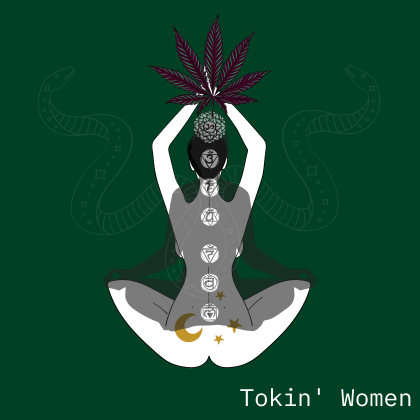
Apr 12•3 min read
ASD, the Vagus Nerve, Sex, and Cannabis

A few years ago I stumbled across Polyvagal theory at around the same time I had become aware of the characteristics of Autism being prevalent in my behaviours: I had always had difficulty making eye contact, if I was around people who triggered my fight or flight I would pretty much become mute and my focus would shift to their behaviours attempting to interpret any indicators of rejection which essentially felt like danger (still happens); I was prone to meltdowns (still am) and had difficulty regulating my emotions (still do)…just less frequently, and not as challenging to return to homeostasis. Polyvagal theory was introduced in 1994 by Stephen Porges and is a: “collection of unproven, evolutionary, neuroscientific, and psychological constructs pertaining to the role of the vagus nerve in emotion regulation, social connection and fear response."
The theory assumes that difficulties in regulating our behaviours are manifestations of difficulties in our autonomic regulation, and is about the motor pathways going from the brain to the body and the sensory pathways going from the body to the brain . Approximately 80% of the fibres are sensory, meaning that the vagus nerve reports back to the brain what is going on in the body. It’s is the longest nerve in the autonomic nervous system and comprises two parts: the ventral pathway of the vagus nerve responds to cues of safety in our environment and interactions. It supports feelings of physical safety and being emotionally connected to others in our social environment. This pathway is myelinated - meaning it has a protective sheath around the nerve fibres, allowing faster and clearer transmission. The dorsal pathway of the vagus nerve responds to cues of danger, and we turn away from connection, shifting into a state of protection. These dorsal nerves are unmyelinated and are more susceptible to damage with a higher chance of losing nerve impulses.
Barry Komisaruk, professor of psychology wrote this: “The cervix is remarkable in that it has three different pairs of nerves that carry sensation from it: the pelvic nerve, the hypogastric nerve, and the vagus nerve…I don’t know of any other organ in the body that has three different sets of sensory nerves carrying sensation from it…The cervix must have a very important physiological role.”
If I was to theorise the effect of cannabis on a woman, cannabis promotes remyelination, repairing nerve damage and restoring functional communication of the vagus nerve from the cervix to the brain. And the primary molecule involved in this is Δ9-Tetrahydrocannabinol (THC), but not in isolation, all the cannabinoids are playing a role and working synergisically. And intentional cannabis use with the focus applied to the cervix is one of the most powerful forms of vagal stimulation accessible to us.
Now all we need is Stephen Porges, Barry Komisaruk, and one of the leading scientists on the endocannabinoid system/cannabis to collaborate and conduct some experiments and report some findings on cannabis and the cervix!
